Drawing Powers 4: The Drawing-object
This text is the fourth in a series of five in which Fernando Poeiras (ESAD.CR/LIDA), explores the different powers of drawing within architectural design projects. Each text is illustrated with examples from the Drawing Matter Collection. Find the introduction to the series here.
After I have developed a feel for the programme, and its innumerable demands have been engraved in my subconscious, I begin to draw in a manner rather like that of abstract art. Led only by my instincts I draw, not architectural syntheses, but sometimes even childish compositions, and via this route I eventually arrive at an abstract basis to the main concept.
– Alvar Aalto
The term ‘drawing-object’ designates the exploration through drawing of zones of undifferentiation between the drawing, the object, and the drawer. [1] Exploring these zones can help overcome unnecessary limits, obliging the drawer to learn in the face of the new, the previously unperceived, unfelt, unthought, and unimagined. This is the fundamental potential of experimentation through drawing that we will now investigate.
Experimentation may reveal itself through the practice of unusual drawing techniques, or in non-representational aspects of drawing, such as drawing speed or drawing intensity. [2] Different speeds reveal different thought notations, while different intensities elicit different drawing actions from the person drawing.
These drawings by Philippe Starck bring up an important feature of experimentation: speed. Drawing speed expresses different kinds of thinking. Fast drawings reveal a difficult balance between the notation of immediate thought and the information needed to think through the problem at hand. In this case allusions to localisation, volumes, textures, and structures are rapidly manageable but never vague.
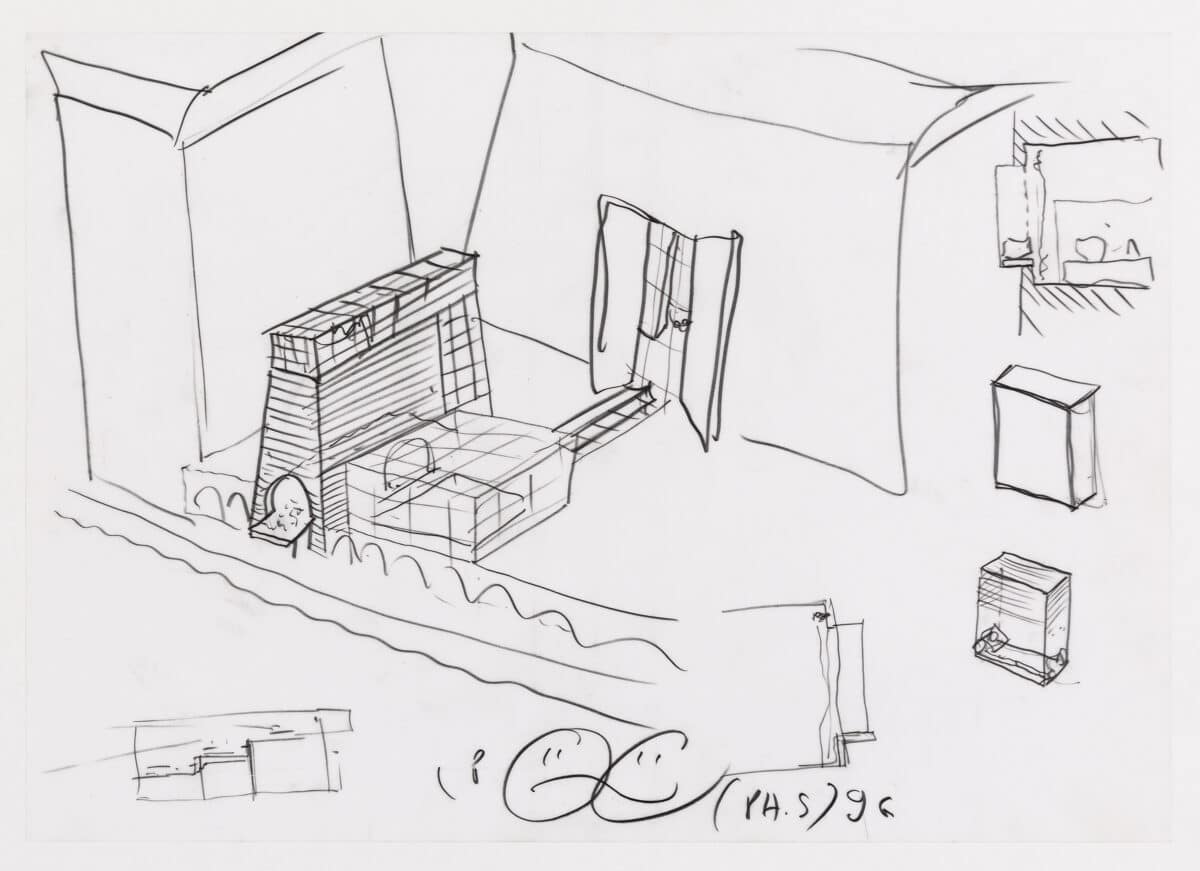
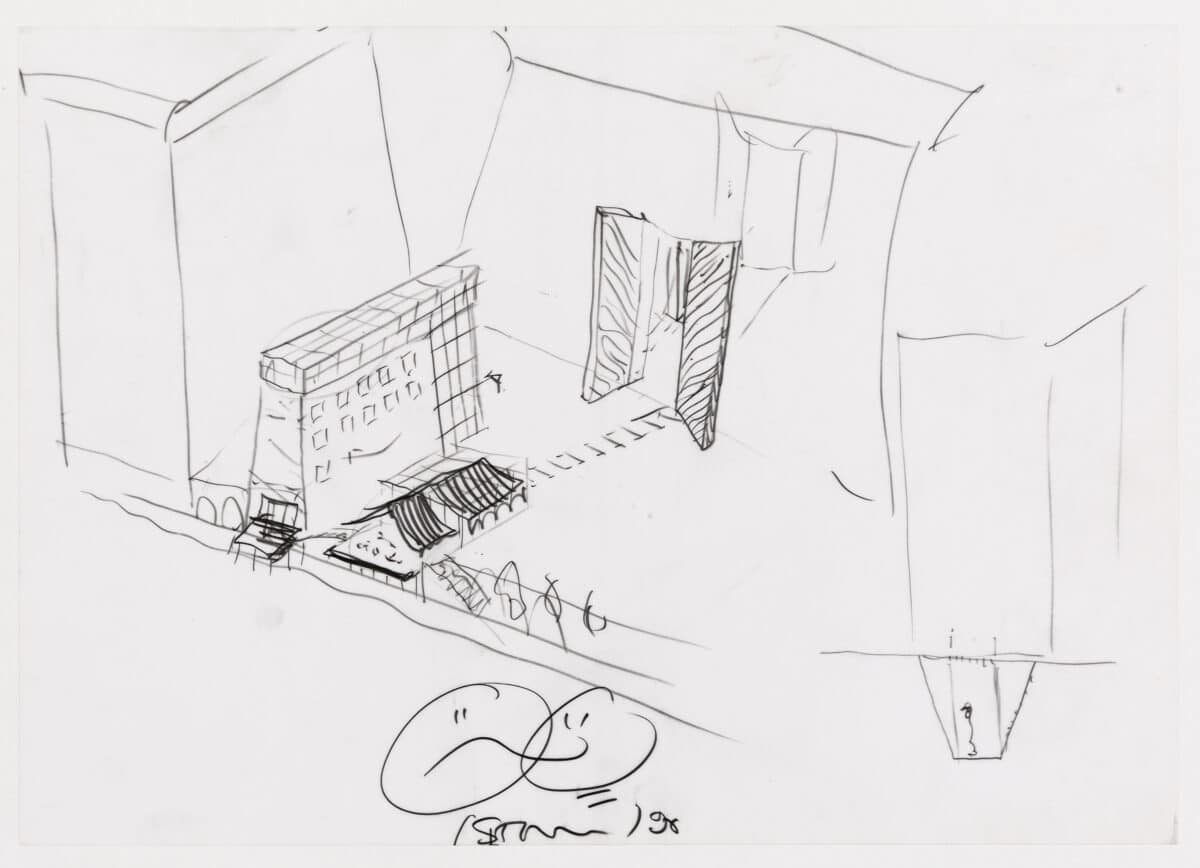
Hans Hollein presents a particular construction of intensity: the solution found by Hollein is an expressive composition in which the outstanding organic forms are set off against orthogonal lines. It is a mode of constructing intensity like a heterogenous ‘collage’, amplified by using different strokes and tones (DMC 2490.19).

Very often, experimentation is organised using identifiable drawing strategies in a series of drawings in which a problem and its solution is addressed and explored. But it is necessary to understand what drawing experiences feed this process of experimentation. The metaphor of navigation, as used by Álvaro Siza, gives some insight into the specific interaction and involvement – both passive and active – of experimentation through drawing.
Firstly, in this kind of navigation the destination of the journey is kept sufficiently open-ended, with no clear and definitive path marked out to reach the destination. Each process of navigation is unique, because each design project has specific conditions, and different paths are found to resolve it every time. Thus, each design solution is different and sometimes that solution may be unique. Through this practice of drawing the designer carefully learns the novel aspects of each case and its particularities. This open and exploratory process often reveals itself in a particular drawing, or series of drawings.
Secondly, some experimental drawings actively engage with internalising and problematising through drawing. [3] Procedures of internalisation are essential to any process of modelling but, in experimentation, these procedures include aspects of the object that are usually alien to drawing.
By subtracting the (omnipresent yet frequently unconscious) exterior limits, Tony Fretton is able to visually consider interior spaces in their various local organisations; this strategy suggests specific functional systems – in their multiple aspects of action, perception, and feeling – that are closer to our ordinary experience of interior spaces, which is always situated (DMC 2890.1).
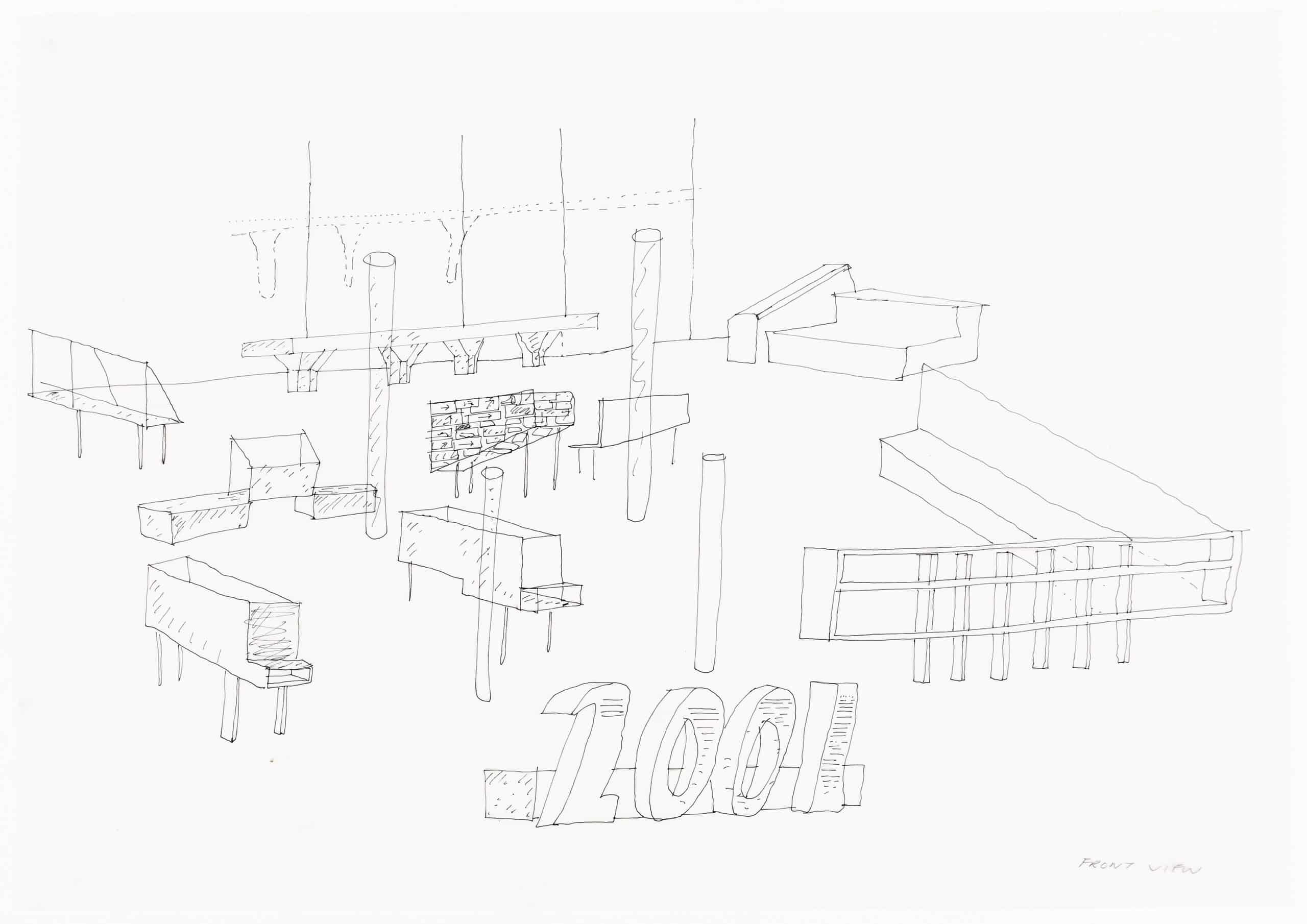
Problematisation through drawing – as distinct from the routine recognition of design problems – actively produces irresolution and difficulties of various types, which must then be overcome in the process.
Thirdly, in addition to the open-ended orientation mentioned above, the openness of drawing also includes a receptivity to heterogeneous multiple events in drawing and through drawing. The drawer must learn how to accept them and even to generate them.
Many of Siza’s drawings explore spatial perceptions and experiences. For example, Siza uses conic perspectives to model the users’ or inhabitants’ perception of architectural space. This drawing is difficult to analyse – we can only form hypotheses – but it shows the creative importance of drawing for Siza’s exploration of space. (DMC 2536.22, Sketchbook 42). In it, his use of the rectangle reveals a very particular understanding of drawing. On the one hand, it acts as a compositional drawing element on the sheet to frame and balance it, addressing the perception of the drawing rather than the architecture. Conversely, the rectangular form could also represent a multitude of architectural elements. This ‘simple’ rectangle form reveals how interiorisation can be experienced through drawing.
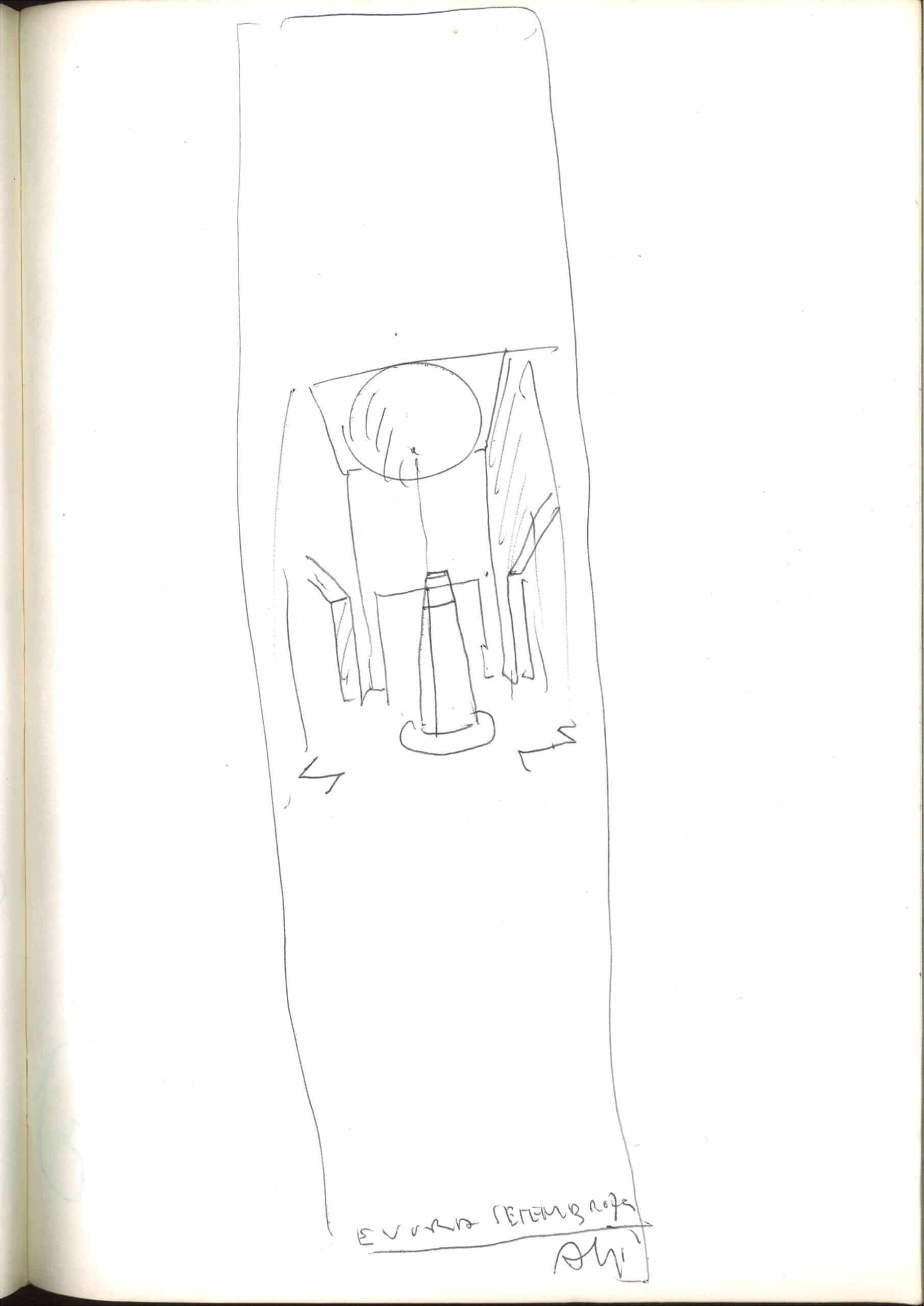
As with navigation, engaging in an emotionally-rich activity heightens the designer’s attention, making it more receptive to the many events that may happen during the process of drawing. These events range from small unforeseen surprises to accidents, or chance occurrences, etc. Through these different modulations of attention, the crucial experience of being acted upon by drawing is acknowledged and worked through.
Lastly, as in navigation, different emotions tend to lead to – though never determine – different perceptions, different thoughts, different ideas, and thus different actions. [4] In parallel to experiencing all this, the person involved and interacting in producing the drawing goes through different sentient states. Sentience, and not just rational consciousness, is the thoughtful experience resulting from being fully absorbed in the corporeal movement of ‘navigation’. As well as the distant and reflective observations that occur in navigation, there are also states of thought immersed in sensations and perceptions that lead us to think in different ways. This varied sentient rhythm is converted into the many different speeds of drawing, and the corresponding quantity and nature of the information contained in each drawing.
We may not appreciate the full importance or consequences of the time a designer indulges, through the useful and intelligent pleasure of drawing, in recognising a particular problem and finding ways to solve it.
Siza’s Sketchbooks show a large range of drawing types, for work and for pleasure. Drawings made for pleasure are frequently effortless – avoiding resistance and difficulty – or opportunistic – as when a motif catches the eye, and they are sometimes produced almost absent-mindedly. They exercise a kind of free and boundless practice, as opposed to strictly goal-oriented working drawings (see for example: sketchbook 35; 2532.7).
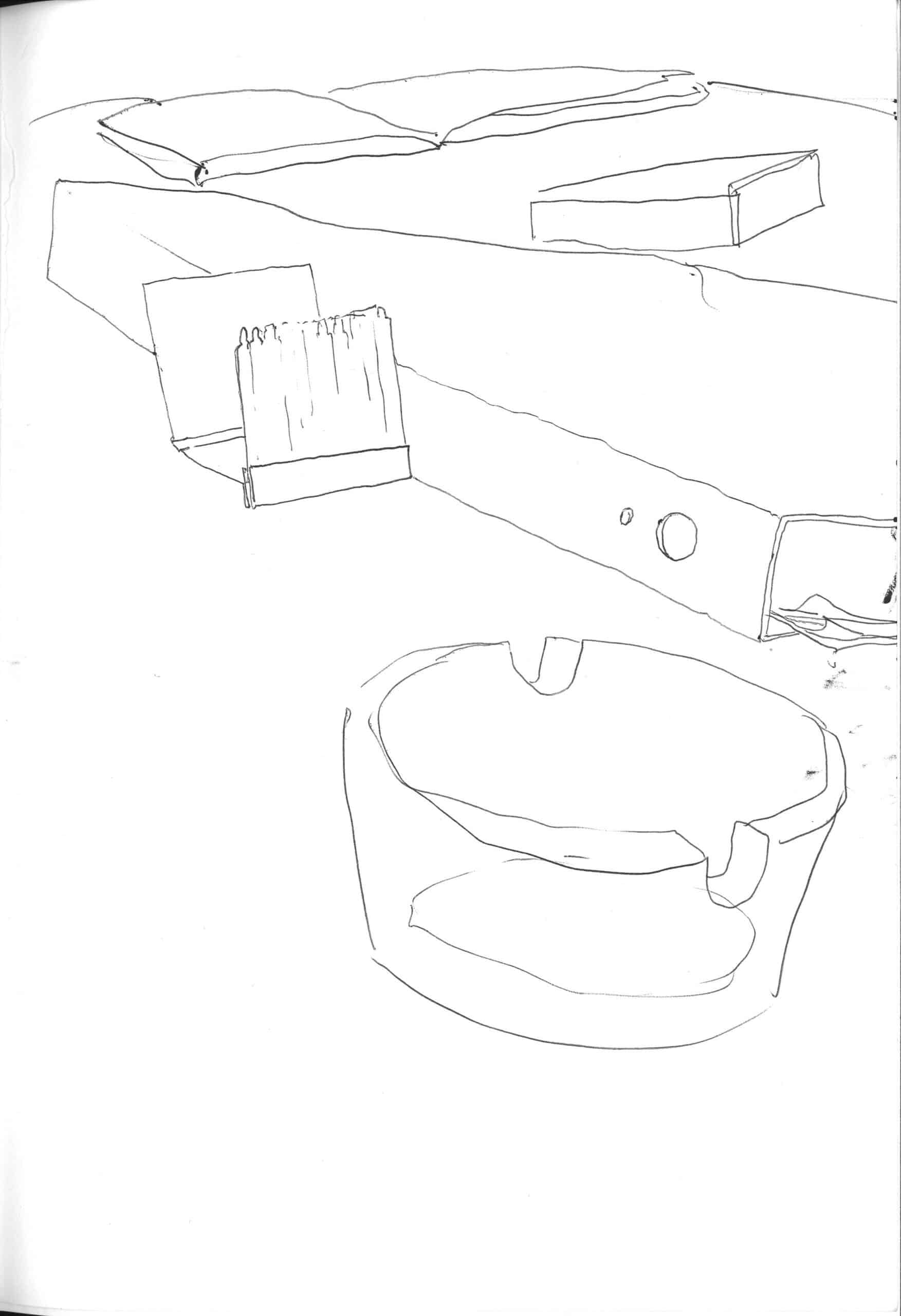
Fundamentally, experimentation exists embryonically in experiencing the unstable imbalance between the drawing and the drawer, through the act of drawing and of being acted upon by the drawing. [5]
This relationship has many versions in design drawing: drawing and (really) seeing what has been drawn; imagining, and having the imagination spurred by the drawing; seeking to clarify, but then being perplexed by unexpected results, etc. This experience of the unstable imbalance between drawing and the drawer is enhanced by all the active and sometimes strategic procedures of experimentation.
Notes
- Gilles Deleuze, Spinoza: Practical Philosophy (San Francisco: City Lights Books, 1988).
- José Gil, Sem Título: Escritos Sobre Arte e Artistas (Lisbon: Relógio D’Água, 2005).
- John Rajchman, Constructions (Cambridge, MA: MIT Press, 1998).
- Jean Claude Kaufmann, Le Coeur à l’ouvrage: Théorie de l’action ménagère (Paris: Armand Colin, 2015).
- Fernando Poeiras, ‘Pragmáticas do Desenho em Design II: A Não Coincidência Entre a Ideia e a Imagem no “exercício” de Desenho’, Cadernos PAR (2009), p. 10–25.

– Fernando Poeiras